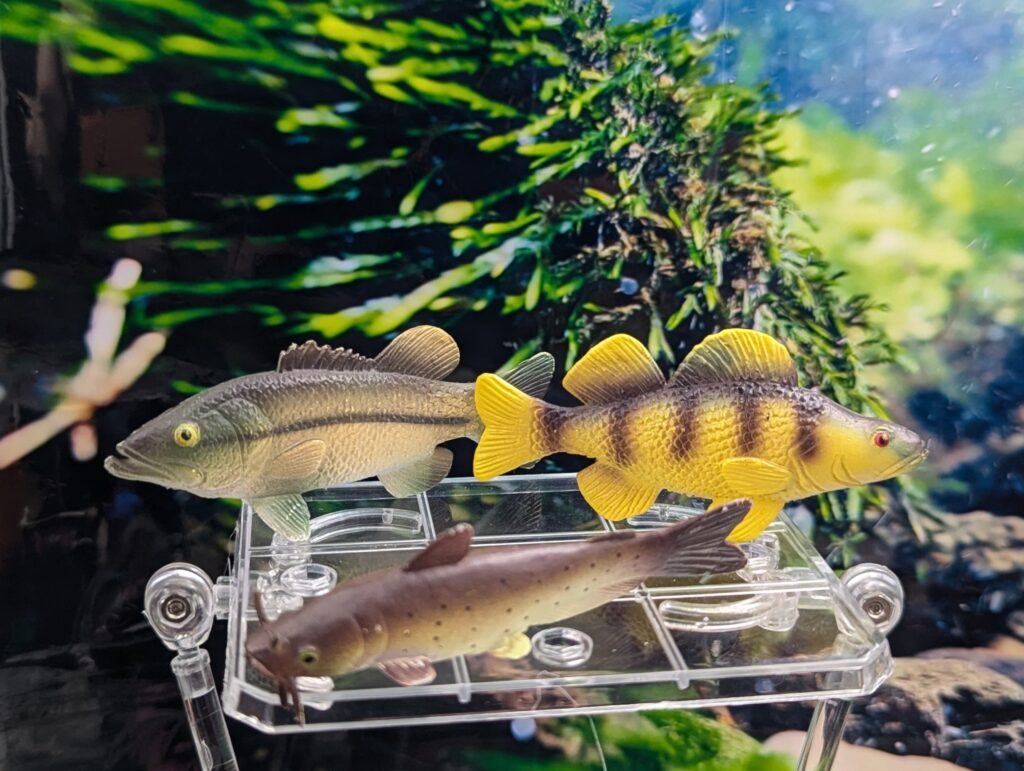
Back with another trio from the original dozen three inch fish released by Replica Toy Fish. When packaged in the small acrylic tubes, it was referred to as the ‘Pond Fish’ set. While the ‘Northwoods’ set featured popular angling fish found primarily in northern North America, the next six are normally considered more southern in their natural distribution–but as with any popular sport fish, they’ve found themselves spread, legally or not, into many other regions of North America and the world. As before, I’m starting with just three species from the set, all of which represent species that have been seen on the blog at least once before. These include the channel catfish Ictalurus punctatus, largemouth bass Micropterus salmoides, and yellow perch Perca flavescens. And all three of these species were also revised for the Toy Fish Factory sets.
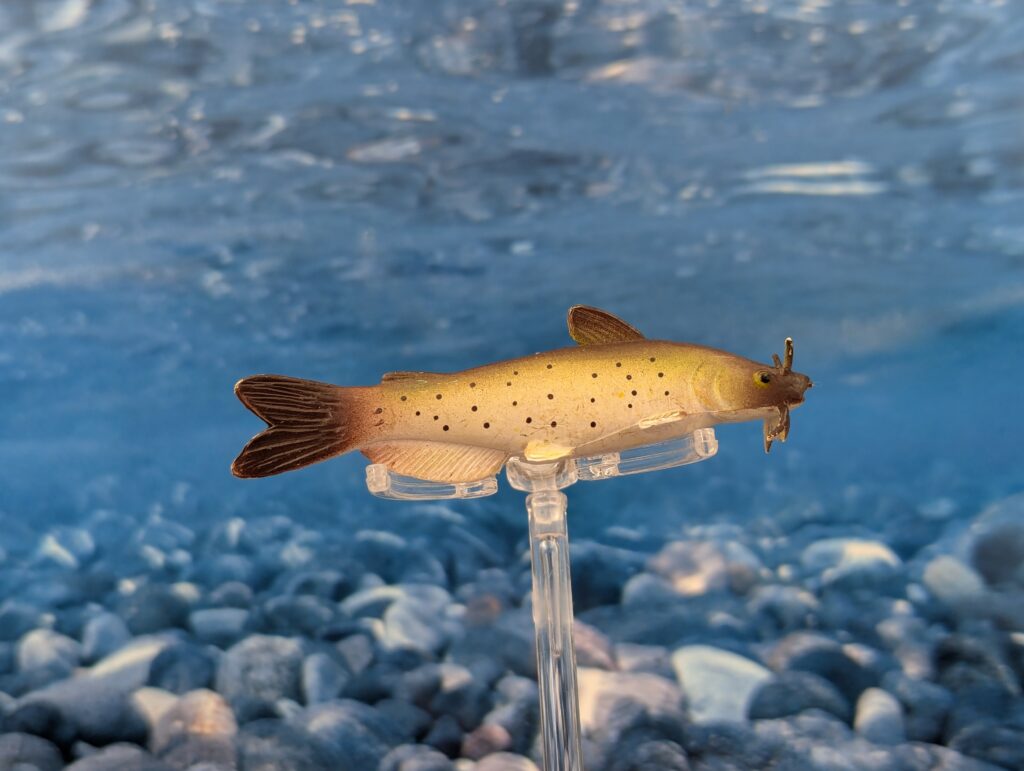
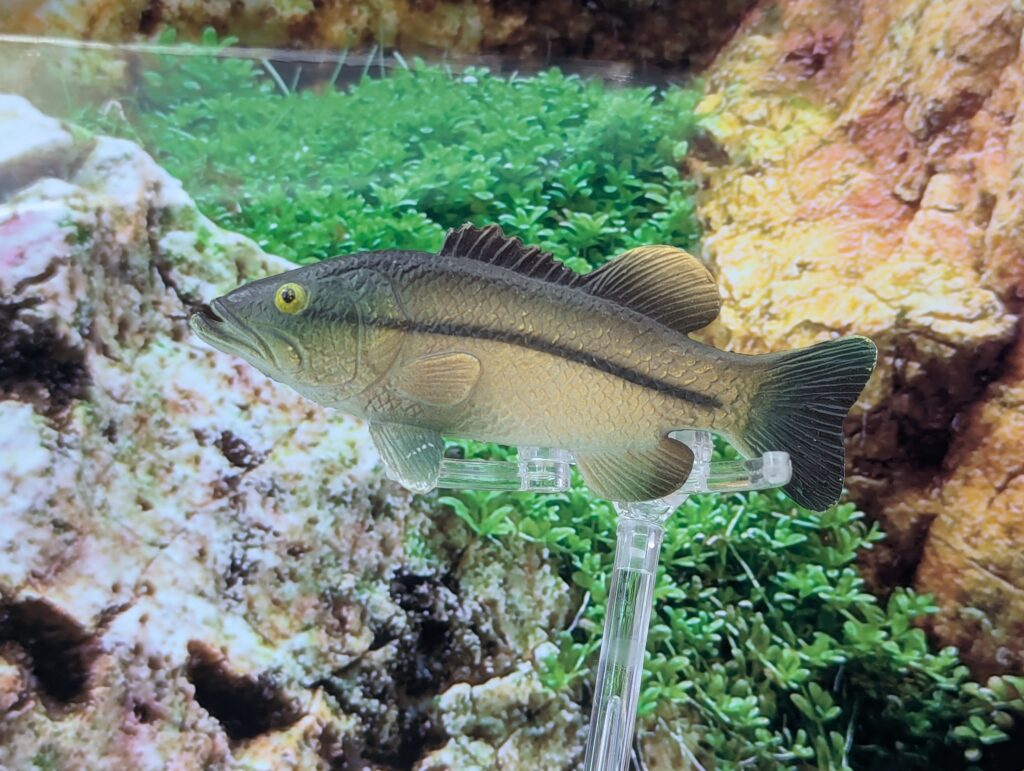
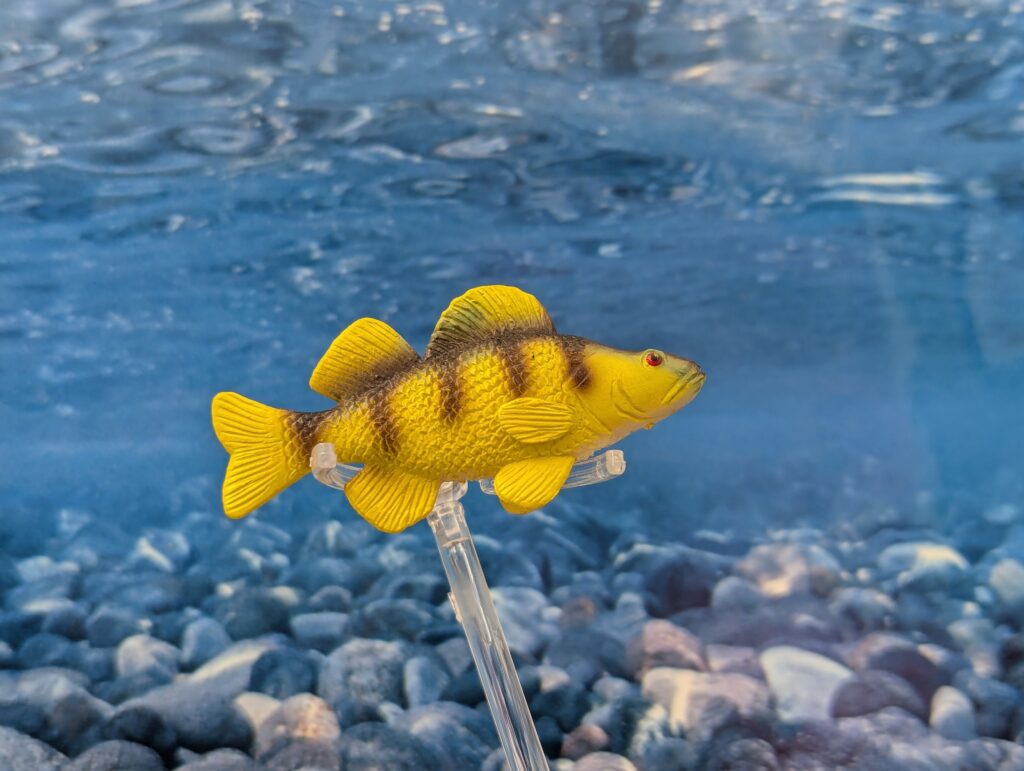
I’m not quite certain why the set is called ‘Pond fish’. While it is true that many of the included species can be found in small bodies of freshwater like ponds and sloughs, some can be found in a wide variety of locales. Maybe it’s just referencing popular fishing locations for them? Anyway, since two have extensive discussions on the blog, I can be more brief about them; the third I will give more detail. And it turns out that I don’t have any weird repaints or variant of any of the pond fish figures.
Channel Catfish Ictalurus punctatus
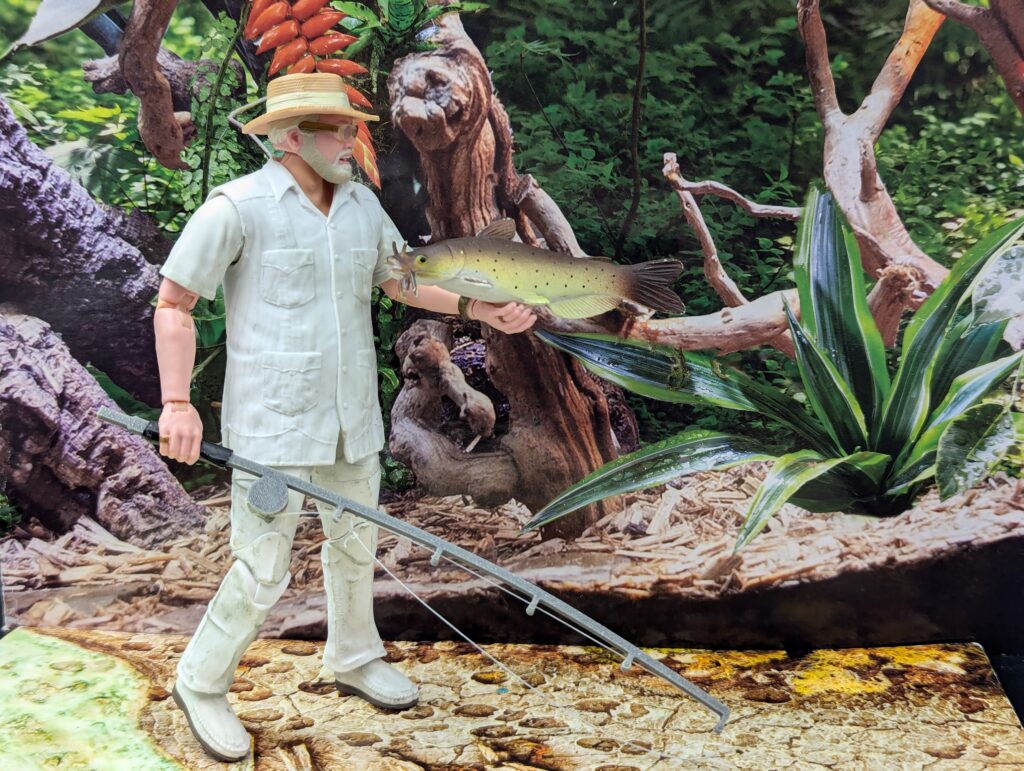
The first fish we will see is the 3-inch series channel catfish, seen previously in the six-inch version here. I was able to describe the life history and distribution for this large catfish in that post. Not much changes with this model, but of course the size is noticeably different! Overall shape is very similar, but the figure has been depicted very differently, and in many ways more effectively.
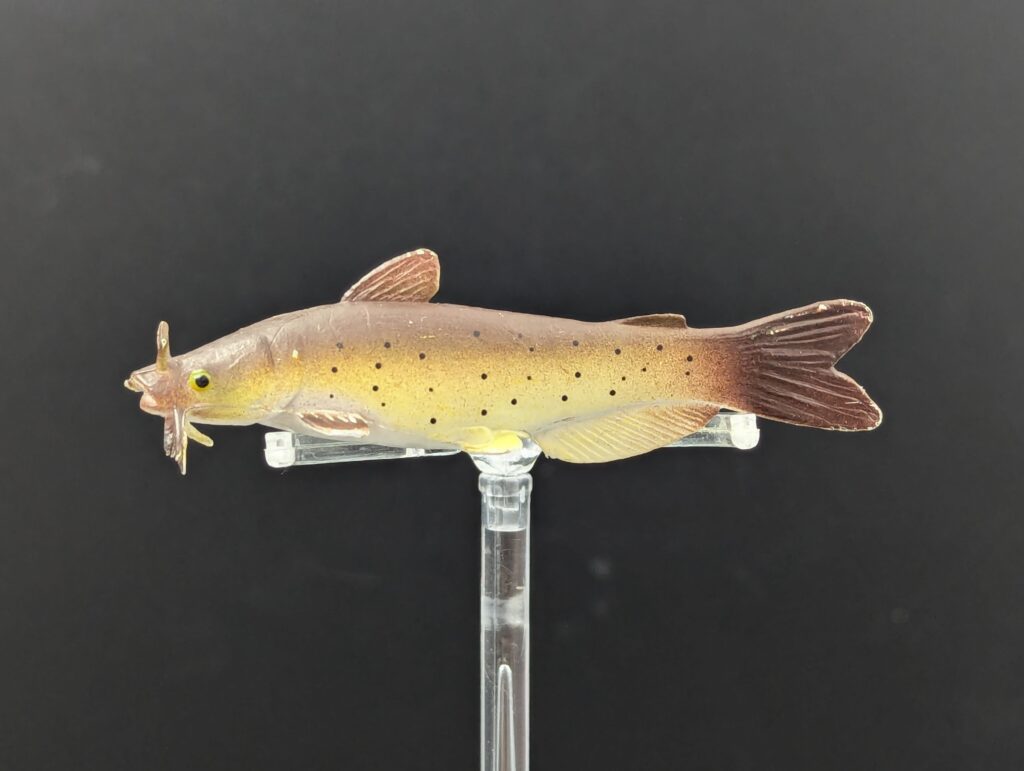
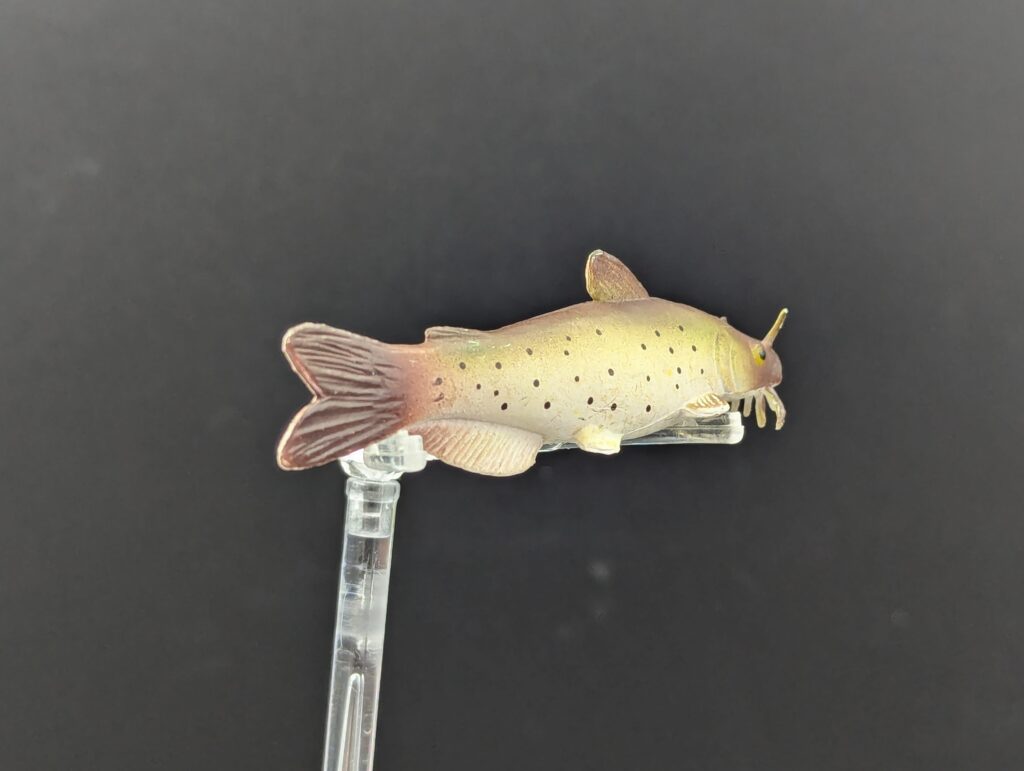
One thing that really stands out is the whiskers–the barbels on the lower jaw are present in three distinct pairs, instead of two. As well, the large lateral barbel is sculpted against the side of the face, rather than extended out from the mouth. Otherwise, the figure is outwardly the same. Obviously it’s smaller, about 7.4cm (2.9 inches) long, so scale is around 1:9, less than half the size of the larger model.
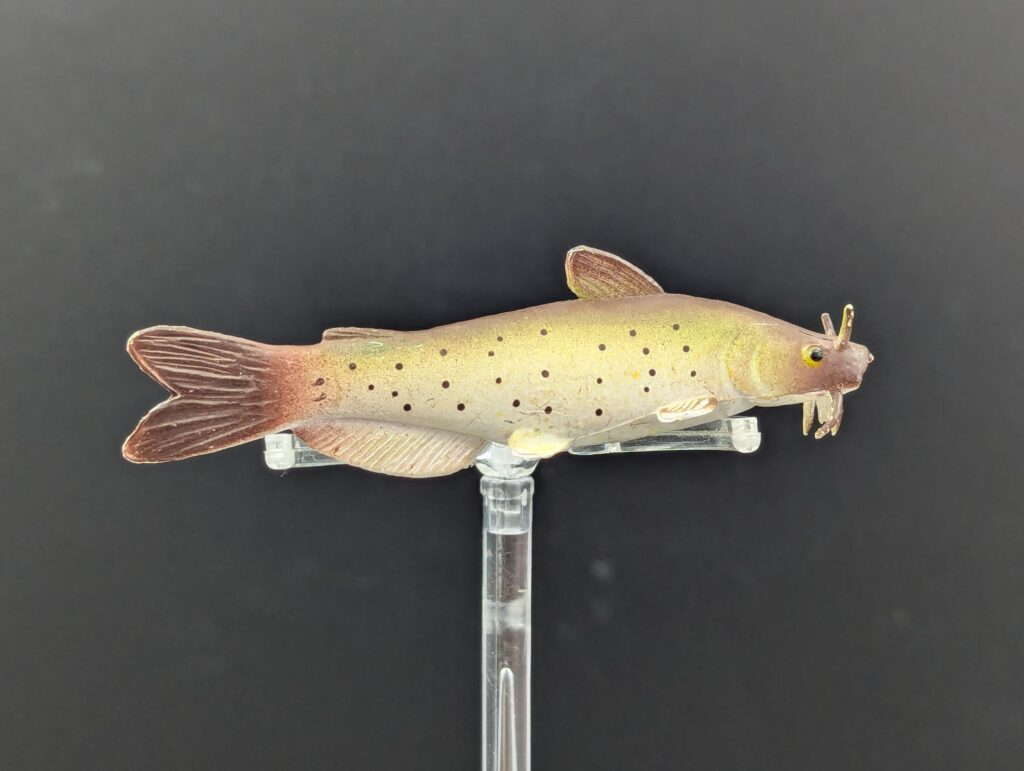
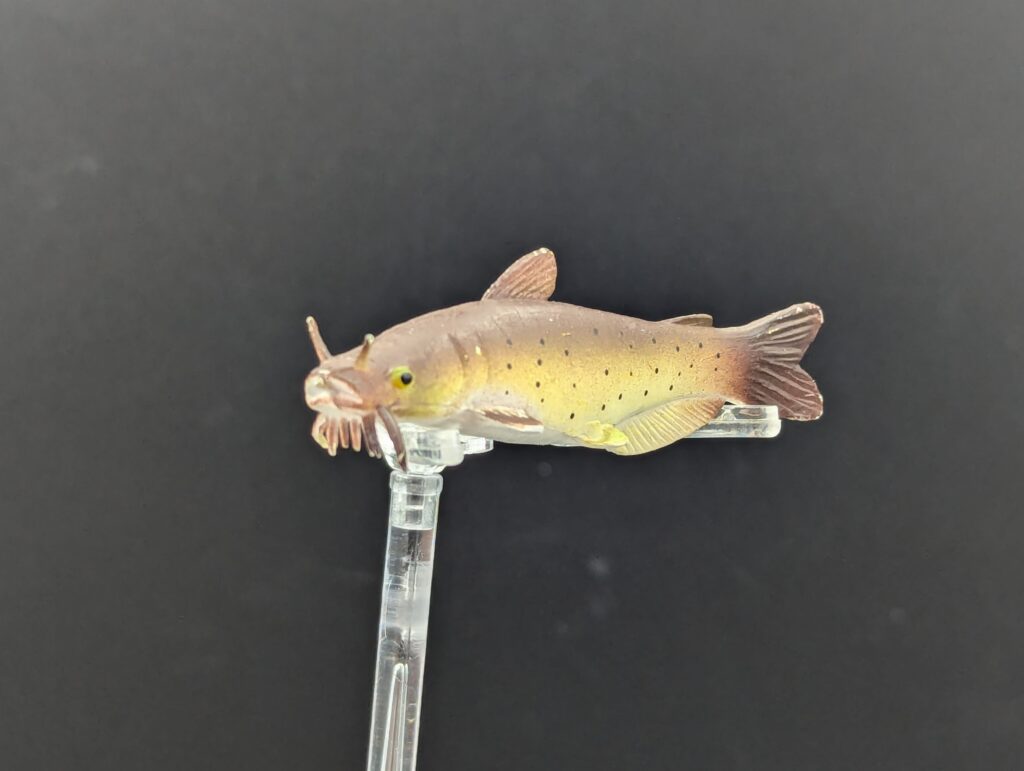
In terms of colour, the figure appears to be painted more realistically than the six inch. The overall dorsal colour is a dark brown, fading along the mid-body to a light yellow, and finally white on the belly (or, more exactly, unpainted). The body is speckled with tiny black spots, and the eye is also picked out in black as well. As with many of the figures, the painting on the fins is somewhat uneven–the dorsal fins and tail fin are all brown, as are most of the pectoral fins, but not the pelvic fins. That said, paint on the Replica Toy Fish figures could be pretty uneven from figure to figure, and could vary. Also, all three of the figures in this post were re-issued with Toy Fish Factory (although the American Angler set that contains two of them isn’t on the blog…that should be rectified someday!)
Largemouth Bass Micropterus salmoides
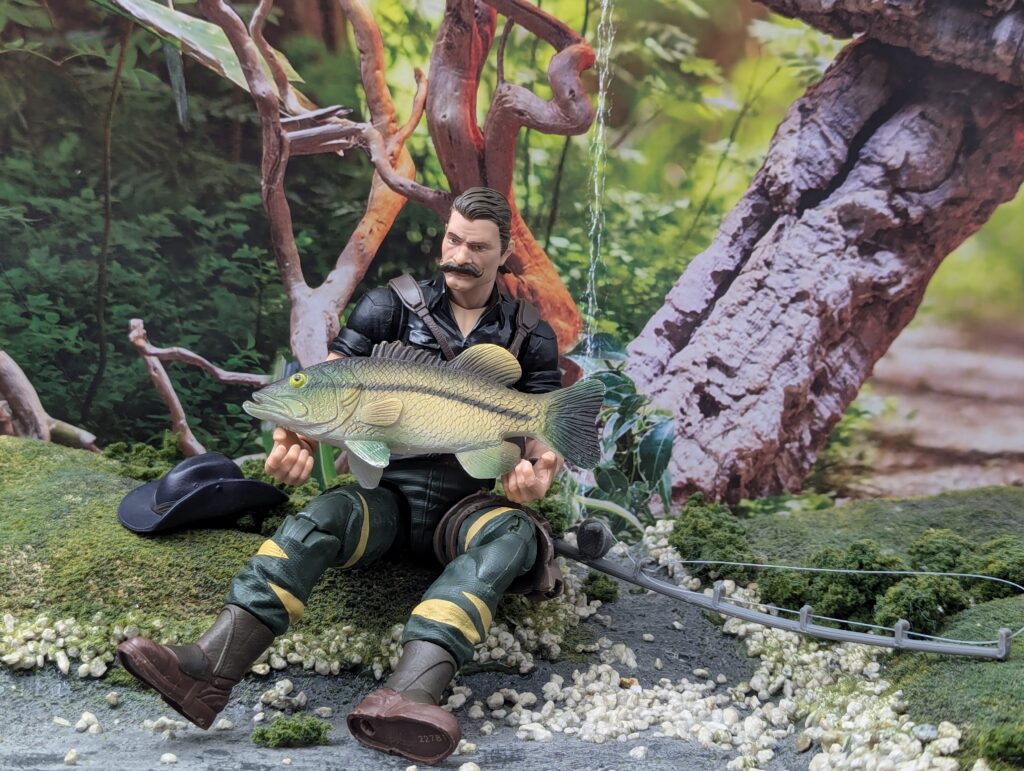
The next species up is the largemouth bass. This is a very popular fish with anglers, so it’s inclusion would be expected. And given the popularity of the species, it’s not surprising that it has shown up before on the blog–several times actually–so I won’t need to go too much into this species either! Suffice to say, it’s a large, highly predatory bass species that has been introduced in many places for anglers–and in some places, native species (like gar and bowfin) have been targeted for their perceived negative impacts on the bass population (whether native or introduced). Even though those other fish are also quite the sport fish…but management in some places has improved. Anyway, the largemouth bass figure!
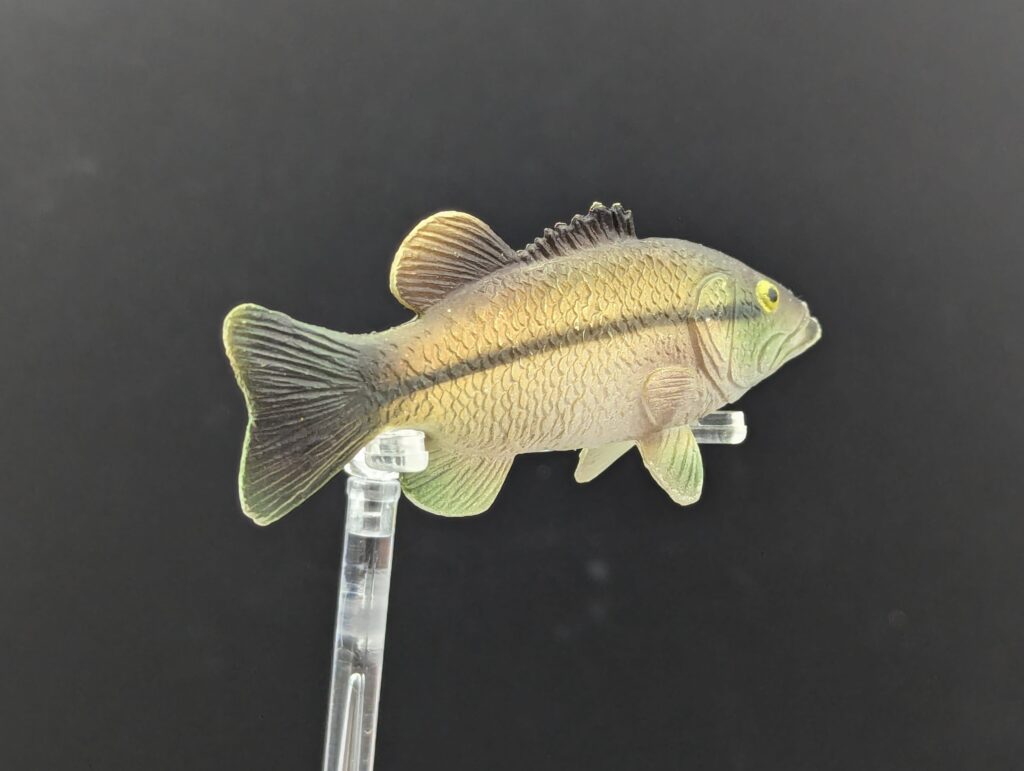
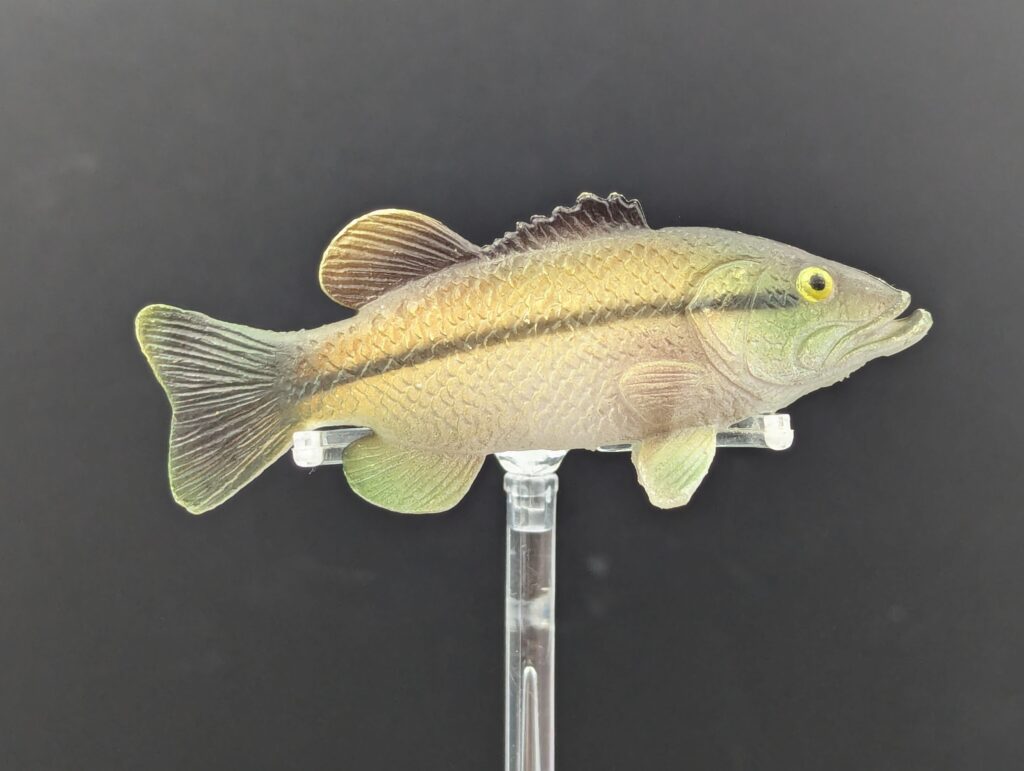
The sculpt of the figure is a very typical Micropterus look, with the long, high back and large, extensive dorsal fin. The mouth is closed, in a lurking/swimming form, typical for Replica Toy Fish models. The pectoral fins are held against the body, while the pelvic fins are extended below the body, extended somewhat outward–this does allow the fish to be displayed ‘standing’. The large anal fin extends across most of the lower peduncle, and the ail is broad. The scales and fin rays are well-sculpted at least. Overall similar to the RTF smallmouth bass, but sculpted to be longer and deeper. The figure is 7.9cm (3.1 inches), so is a little longer, with a scale of about 1:8.
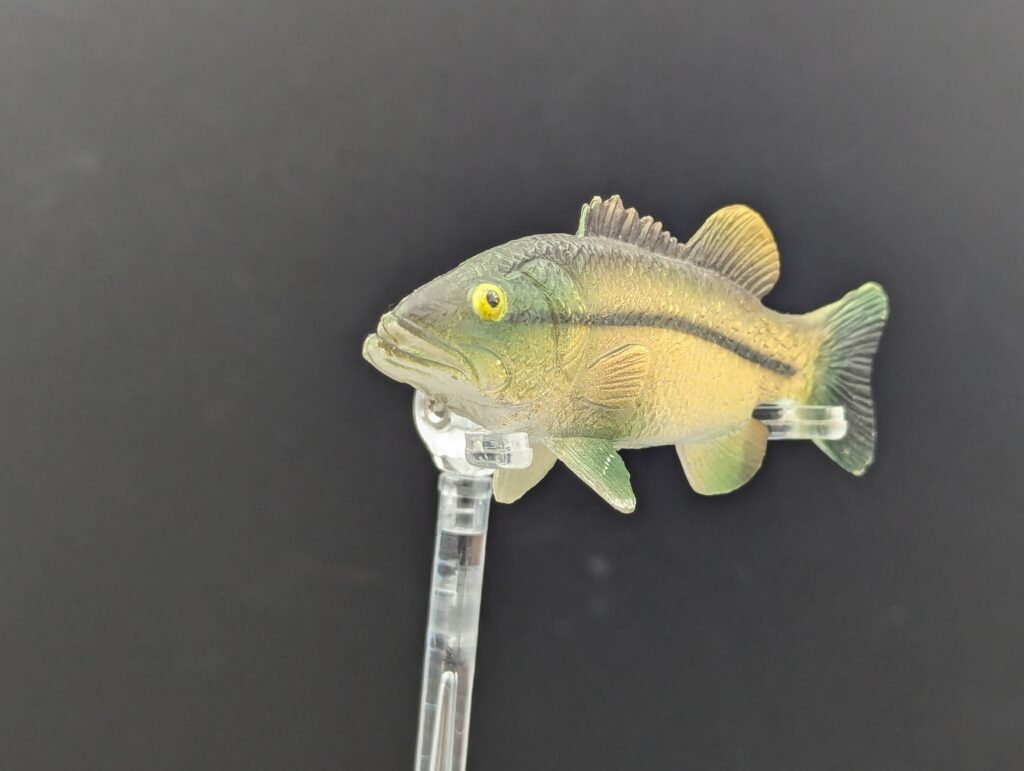
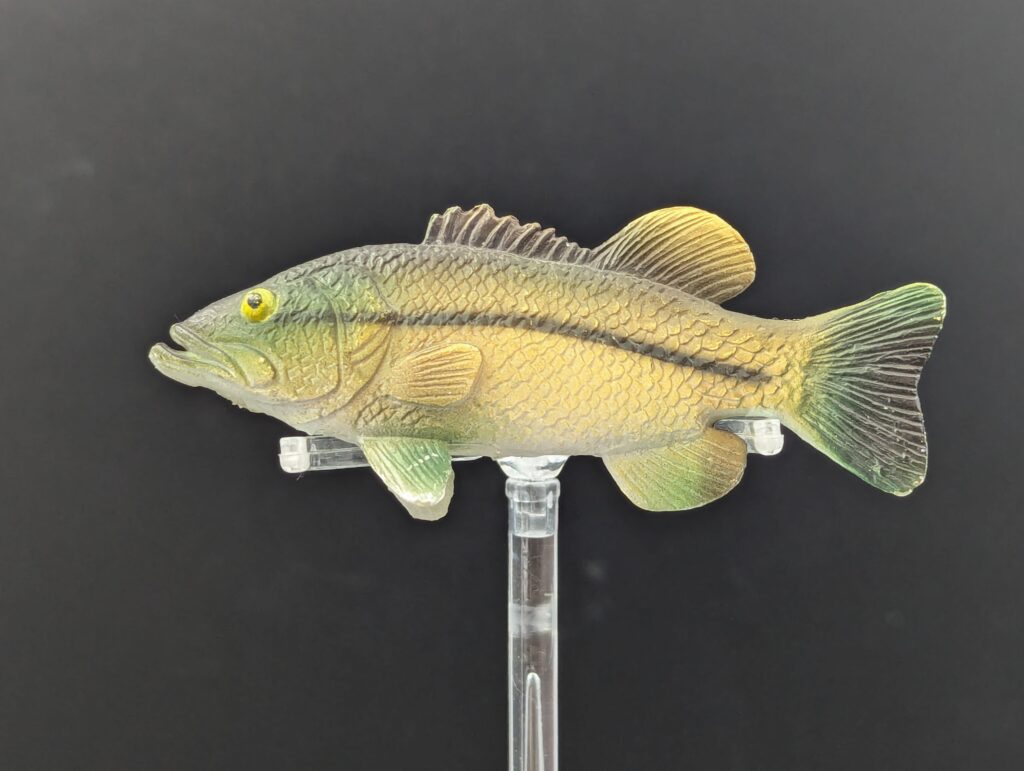
The paint job is…let’s say lackluster. I already linked to others on the blog, and honestly none compare to the Yujin figure. The overall colour is a a dim yellow , darker across the back. A solid, black stripe follows the lateral line, but otherwise there are no other patterns or markings on the body. The fins vary from either black, green, or the base yellow colour, with the belly/underside left white. The eyes are large and yellow with a distinct black pupil. Overall impression is that the painting is very simple, and does not reflect a largemouth bass very well. The black stripe is characteristic, but usually more broken into spots or bars, and the base colour is usually more green or brown–they are quite variable though. In this instance, I can’t even say the Toy Fish Factory version is better, just a little richer but otherwise the same.
Yellow Perch Perca fluvescens
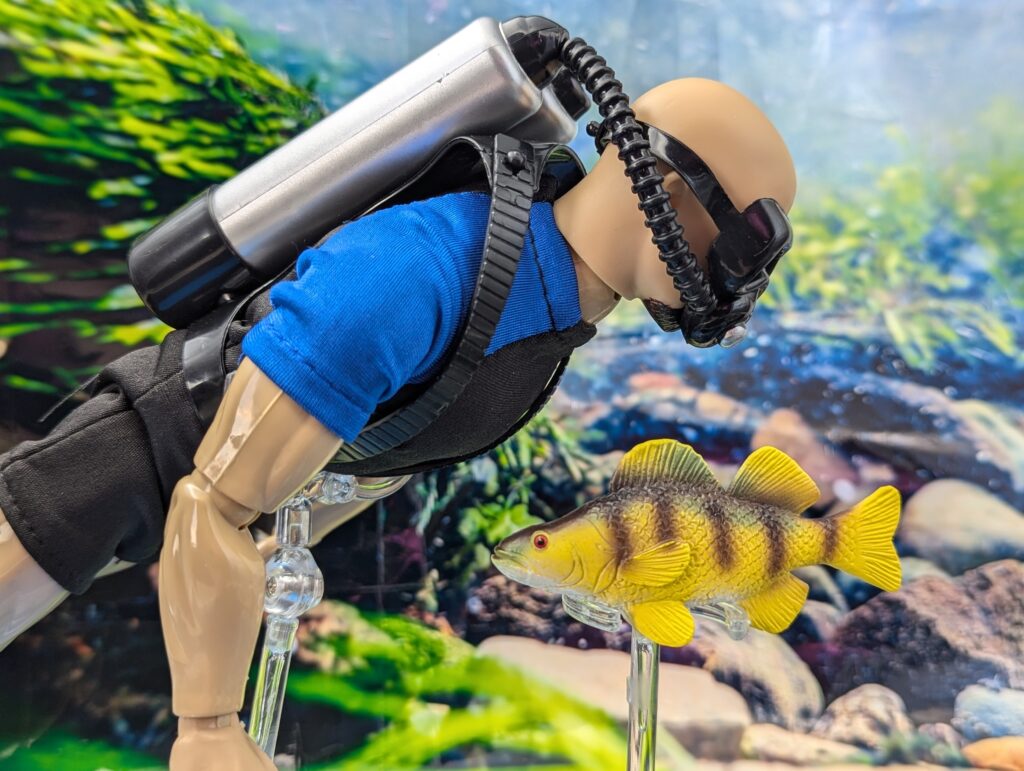
The final figure in this post is the yellow perch, another fish that has appeared on the blog previously but not with a lot of life history detail, so I will go in a little more here. Yellow perch are a spiny-rayed fish effectively acting as the ‘typical’ ray-fin fish (that literally give the name to ‘percomorph’ fish), native to much of North America (and probably introduced in a lot of places where it wasn’t). The distribution is thought to follow post-glacial melt, primarily in a band south of the arctic to about midway through the continental US. They are also very similar to the European perch P. fluviatilis; for some time, they were considered the same species, and some studies find that the yellow perch may be a subspecies of the European (it was named first). They are primarily found in large and small lakes but will also travel though slow streams as well–meaning that introductions into lakes can lead to perch finding their way further afield. While preferring freshwater they can be found in brackish waters as well; overall perch appear able to acclimate to quite a range of water conditions. Perch are opportunistically predatory, thought of as mostly piscivorous, starting out as plankton feeders and working up to invertebrates, fish eggs, and fish. They are modestly sized fish, averaging around 20cm (8 inches) but can reach up to 50 cm (20 inches); the young are often prey for larger predatory fish–like the above largemouth bass–which is another reason they are often introduced as forage for bigger angling targets, or even inadvertently as bait.
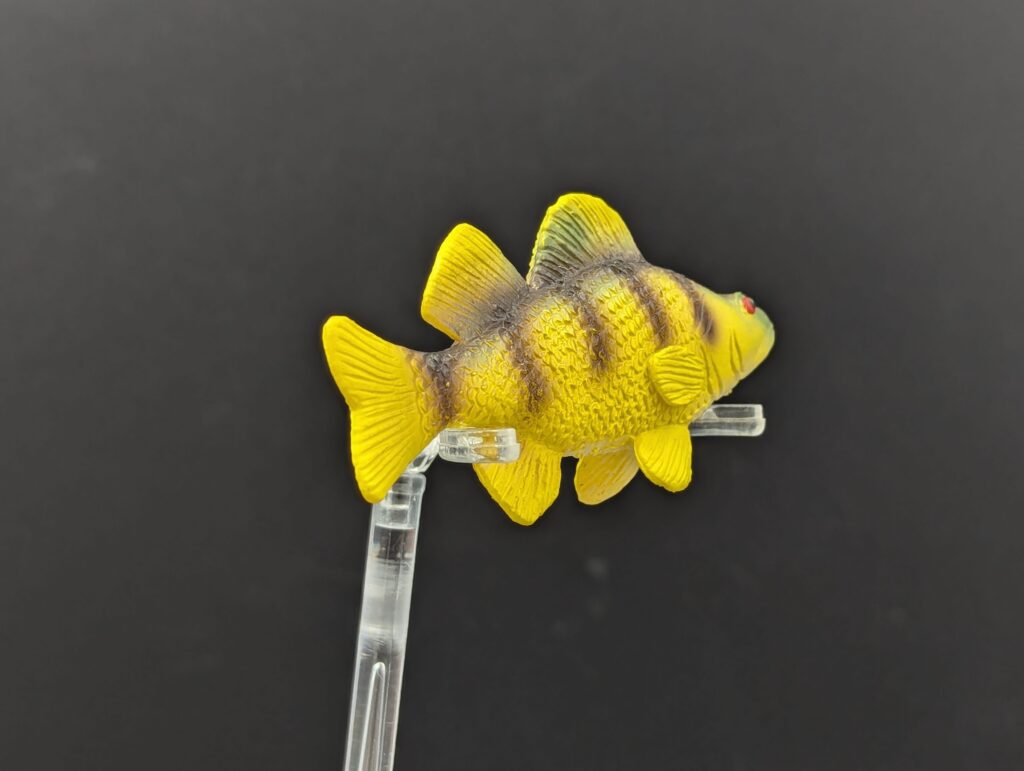
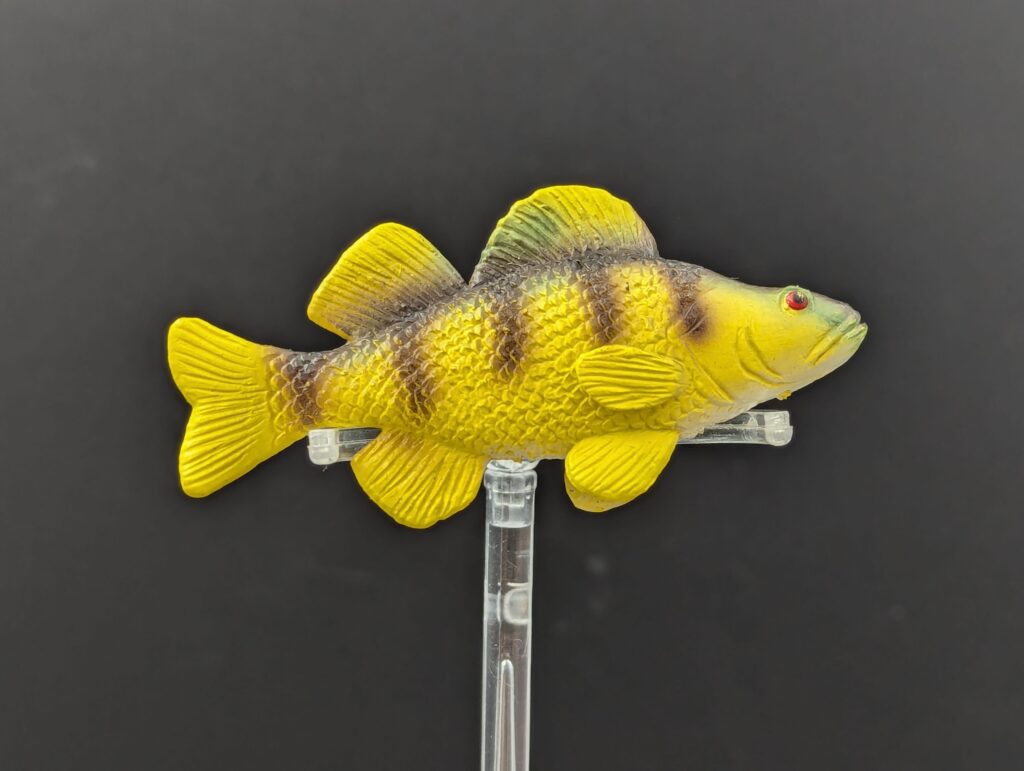
The figure itself is competently sculpted, easily identified by shape as a perch. It is about 7.8cm long (3 inches) giving a scale of around 1:2 to 1:3. The texture of the majority of the body is rough, with heavily sculpted ctenoid scales over the body. The head protrudes quite a bit, smooth except for a few folds at the cheek and a large operculum, including a prominent opercular spine. The finnage is large and prominent, all with rays sculpted clearly. The first dorsal fin isn’t quite as heavily spined as would be expected, and the second dorsal fin does appear a little softer. There is not much separation between the two dorsal fins, although there should be…The pectoral fins are sculpted against the body, and the pelvic fins are positioned to hold the fish up, as in the above largemouth bass. The anal fin is very large, just a bit smaller then the second dorsal fin, which is not quite right. The tail fin is the typical forked tail, possibly a little too rounded on the edge. Again, the overall appearance is ‘perch’ but some details are a little off.
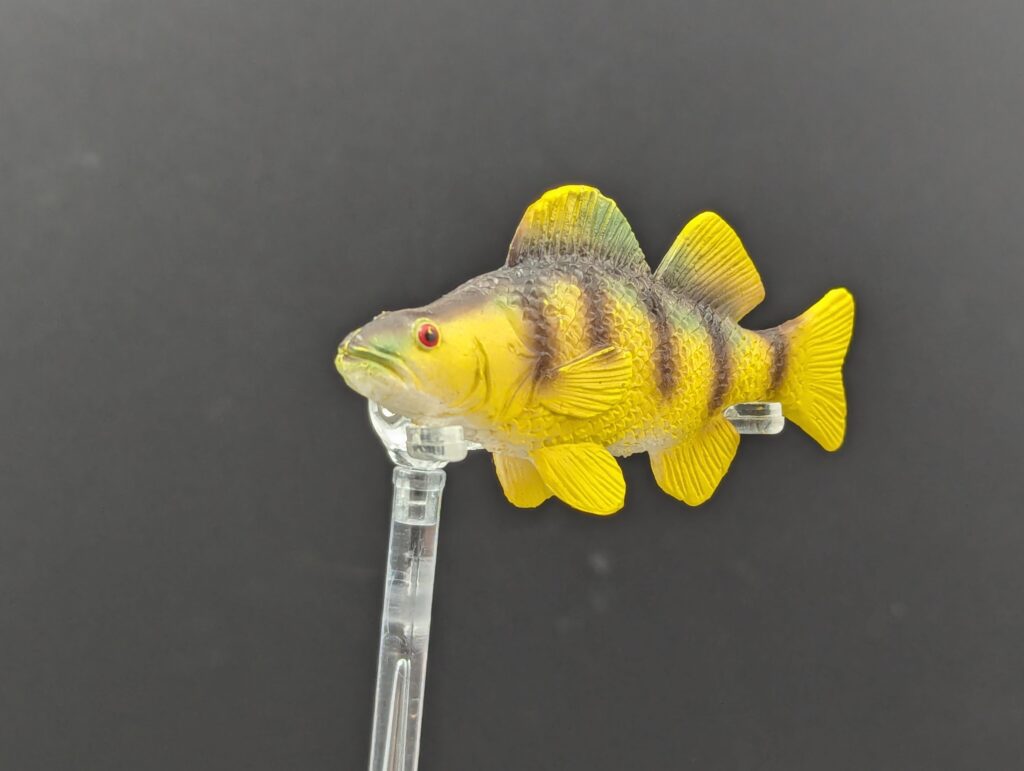
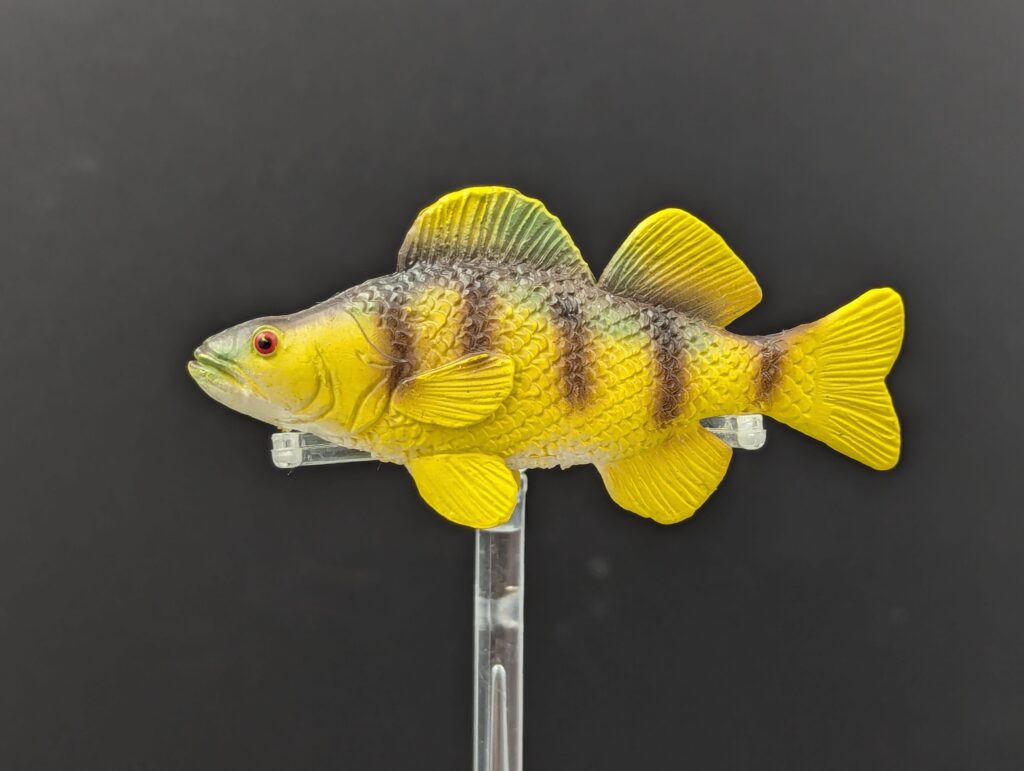
The paint job is fairly simple, seemingly in keeping with about half of the figures. The overall body is a uniform yellow colour–very literal for a yellow perch–the body is quite laterally compressed, leaving just a small white patch on the belly. The only other colour is a dark brown highlight across the back, leading into five brown bands down the sides of the body. The tail, paired, and anal fins are all yellow as well. The dorsal fins have some brown and dark green highlight where they meet the body, but the outer edge is also yellow. On the face, the eyes are a bright red with a black pupil, which seems extreme (or…from an underwater flash photo) and the snout has just a hint of green over the upper jaw. As a choice to paint the figure, this is reasonable of a little broad to represent a yellow perch, but does lack the nuance and shading we’d see on the real fish. I suppose on a toy that would have cost $1 this would be just fine, it’s not like a lot of perch figures were around before then. That has changed now, with both the reissue with Toy Fish Factory and a perch included with the Safari Great Lakes toob.
Disclaimer: links to Ebay and Amazon on the AnimalToyBlog are affiliate links, so we make a small commission if you use them. Thanks for supporting us!



